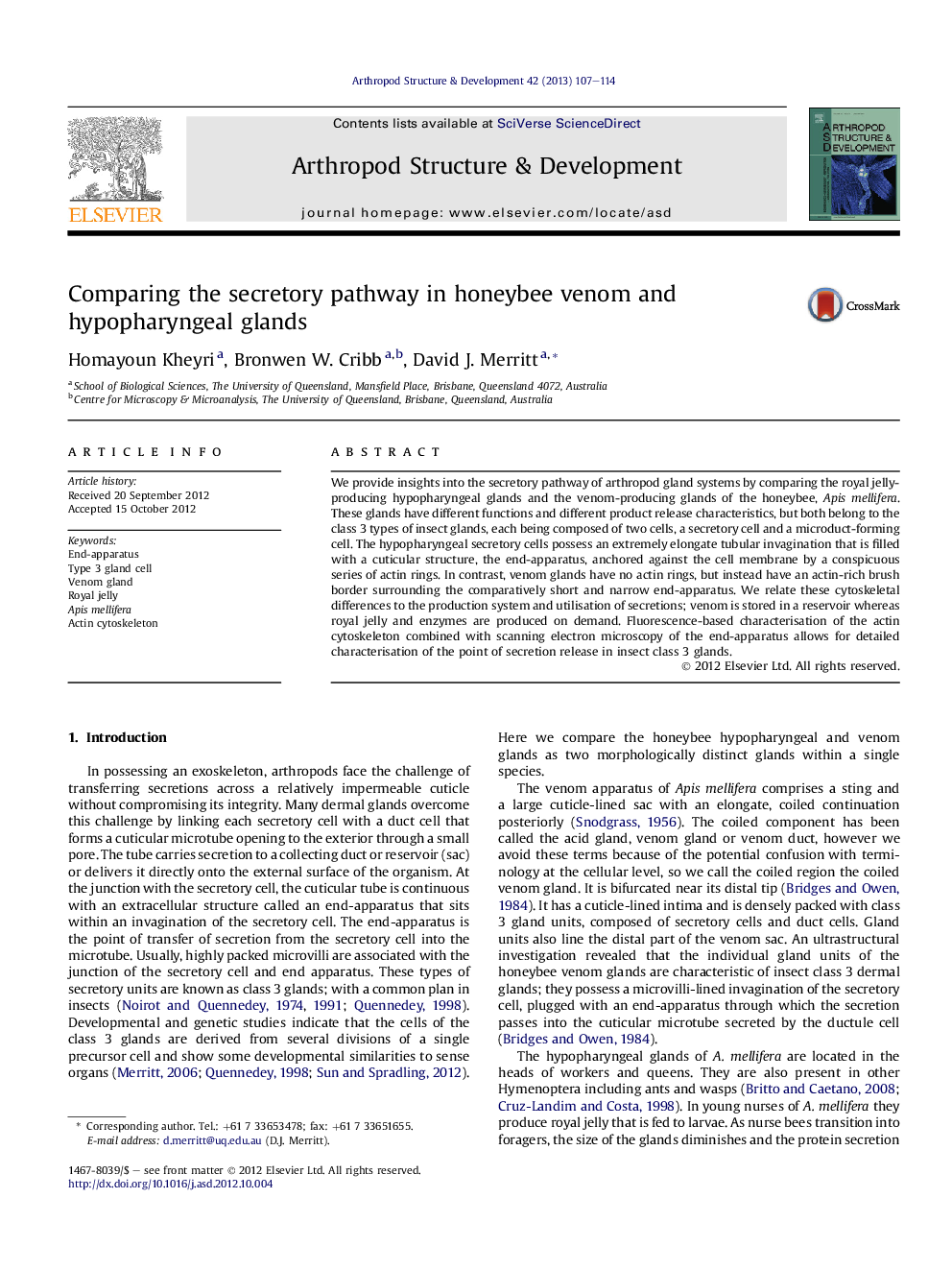| کد مقاله | کد نشریه | سال انتشار | مقاله انگلیسی | نسخه تمام متن |
|---|---|---|---|---|
| 2778616 | 1153151 | 2013 | 8 صفحه PDF | دانلود رایگان |

We provide insights into the secretory pathway of arthropod gland systems by comparing the royal jelly-producing hypopharyngeal glands and the venom-producing glands of the honeybee, Apis mellifera. These glands have different functions and different product release characteristics, but both belong to the class 3 types of insect glands, each being composed of two cells, a secretory cell and a microduct-forming cell. The hypopharyngeal secretory cells possess an extremely elongate tubular invagination that is filled with a cuticular structure, the end-apparatus, anchored against the cell membrane by a conspicuous series of actin rings. In contrast, venom glands have no actin rings, but instead have an actin-rich brush border surrounding the comparatively short and narrow end-apparatus. We relate these cytoskeletal differences to the production system and utilisation of secretions; venom is stored in a reservoir whereas royal jelly and enzymes are produced on demand. Fluorescence-based characterisation of the actin cytoskeleton combined with scanning electron microscopy of the end-apparatus allows for detailed characterisation of the point of secretion release in insect class 3 glands.
Figure optionsDownload as PowerPoint slideHighlights
► The two gland types are built to a common plan.
► The end-apparatus size and shape is a key indicator of differences between secretory cell types.
► The actin cytoskeleton around the end-apparatus differs between the two gland types.
► In venom glands it is brush border-like while in hypopharyngeal glands it forms a series of rings.
► Differences are related to the rate of production of secretion and the presence or absence of a storage sac.
Journal: Arthropod Structure & Development - Volume 42, Issue 2, March 2013, Pages 107–114